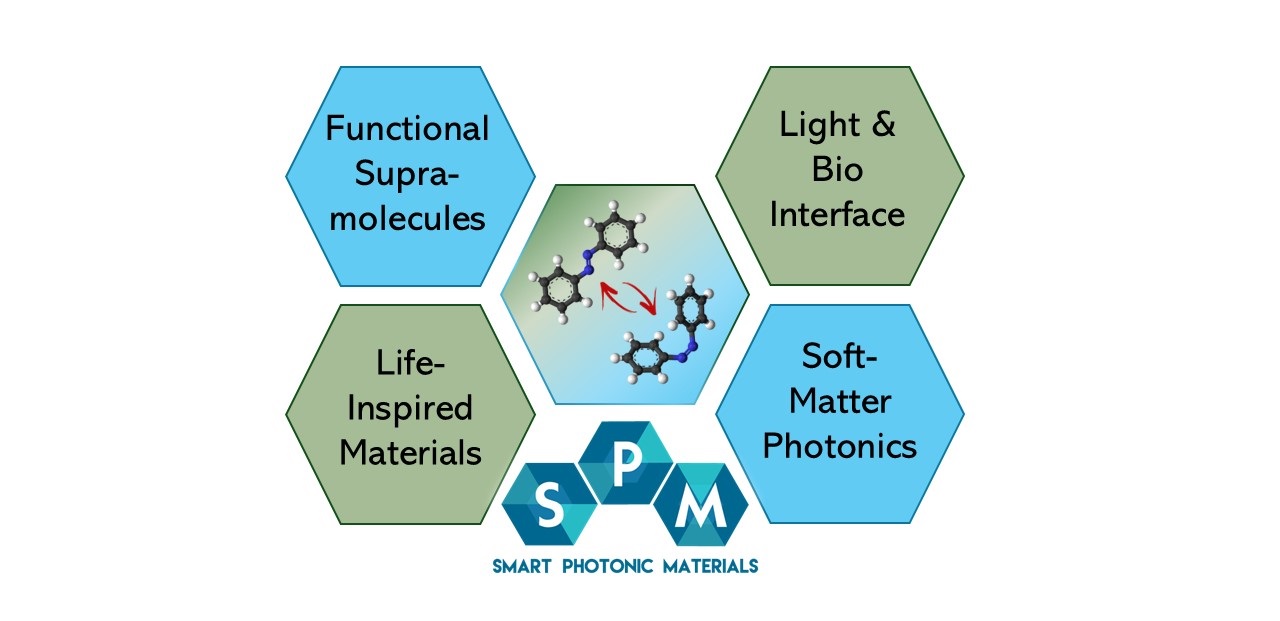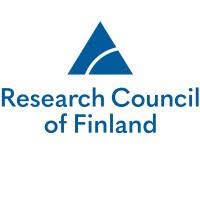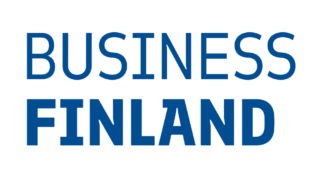We conduct research at the borderline between stimuli-responsive materials and photonics. We aim on one hand at using light to control molecular order (oftentimes using azobenzene photoswitches), and on the other hand at using molecular motions to control the properties of light. We harness light to control light and to create motion. We believe that the basis for disruptive technologies is a comprehensive understanding of the materials’ behavior. Our mission is to conduct top-quality fundamental science, yet in fields that we foresee to have the potential to reshape the technologies of tomorrow.
Our main focal areas “Life-Inspired materials“, “Light & Bio interfaces“, “Soft-Matter photonics“, and “Functional Supramolecules” are strongly interrelated and allow us to approach the research questions we are interested in from both chemical (controlling molecules with light) and physical (controlling light with molecules) points of view. Our main activities and funding are revealed with more details below.
Sensory-motorized material systems (“Life-Inspired materials” and “Functional Supramolecules”)
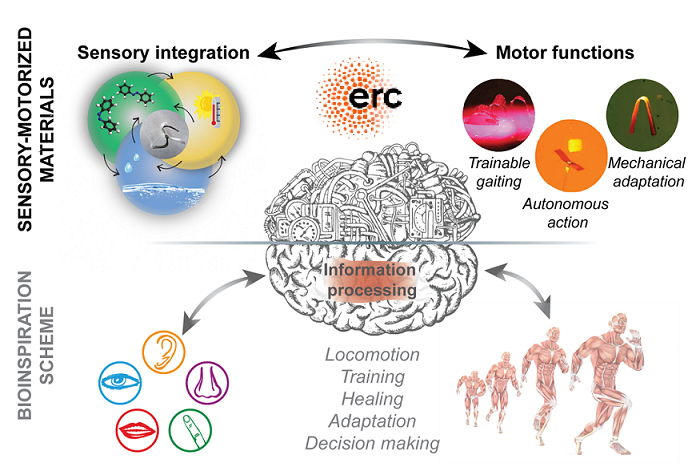
Herein, our main objective is to develop sensory-motorized material systems that perceive several coupled environmental stimuli and respond to a combination of the stimuli via controlled motor functions, shape-change or locomotion. The sensory-motorized materials will be “trained” to strengthen upon repetitive action, they can “heal” upon injury, and mechanically adapt to different environments. They will be utilized to design soft robots with autonomous and interactive functions.
The desired materials will:
(i) quickly change shape in response to multiple interconnected stimuli and adapt to different environments.
(ii) repair themselves and restore their motion trajectories after damage.
(iii) be trained mechanically upon repetitive stimulation.
The project is funded by ERC Consolidator grant 2023-2027
Life-inspired functional materials (“Life-Inspired materials“, “Light & Bio interfaces”, “Functional Supramolecules”)
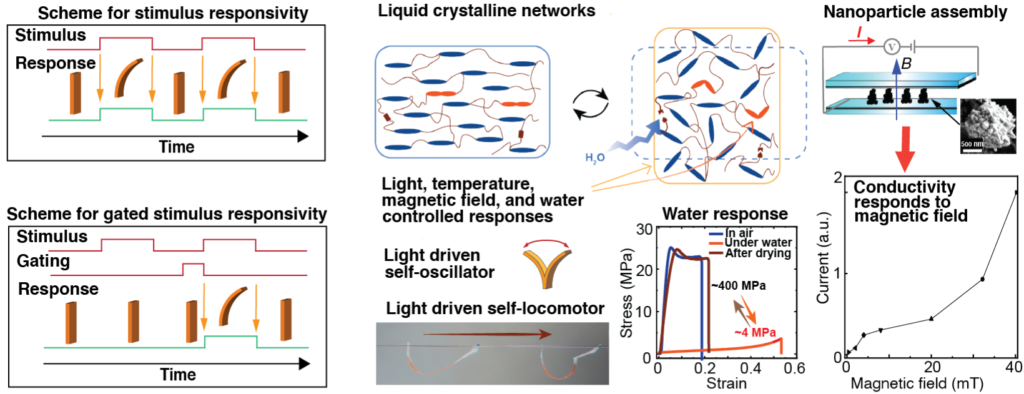
Living organisms invariably comprise multiple components with numerous signal pathways and feedback loops. Life-like properties form the basis of our research as a part of The Center of Excellence in Life Inspired Hybrid Materials (LIBER).
Within the consortium, we develop materials that respond to several types of stimuli. Several approaches are explored using orthogonal stimuli, exploiting multicomponent structures, involving (magnetic) nanoparticles, liquid crystalline networks (LCNs), light responsive dyes (azobenzenes, merocyanine photoacids), polymers, and a wide repertoire of supramolecular constructs.
The project is funded by the Research Council of Finland 2022-2029
Life-reconfigurable cell culture platform (“Light & Bio interfaces”, “Functional Supramolecules”)
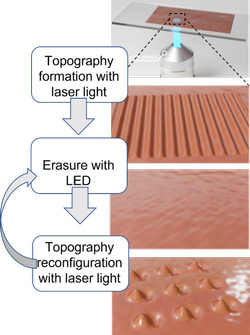
We develop a method for robust, reconfigurable control of surface topography, based on creating reversible light-induced surface structures onto light-responsive multilayers. These light-reconfigurable substrates allow free-form topographical patterns to be created and subsequently reconfigured on a biocompatible cell culture substrate, even when the cells are already growing on the substrate.
The innovative cell culture solution contributes to reducing animal testing in drug screening and toxicology testing, and simultaneously recapitulates the complexity of cell dynamics and mechanobiology in a controllable, cost-effective way, without sacrificing their clinical relevance.
The project is funded by ERC Proof of Concept – 2022-2024 and Business Finland – R2B – 2023-2025
Holographic optical elements (“Soft-Matter photonics”, and “Functional Supramolecules”)
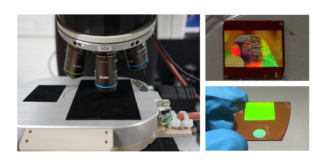
We have developed a novel method for fabricating diffractive optical elements using light-induced sub-micrometre scale surface structuring of azobenzene-containing films. The method allows for creation of surface relief structures with varying heights and complex patterns, which are difficult to create using conventional lithography tools.
This is enabled by a novel a digital holographic microscope (DHM) tool that we developed for real-time, in-situ monitoring and feedback control of the surface-relief grating formation.
Typically for diffractive optical element (DOE) AR displays, the whole development period takes six months, whereas we believe with this method we can reduce the time needed to a few days, similar as with Holographic Optical Elements development process.
The project is funded by ERC Proof of Concept – 2024-2025

